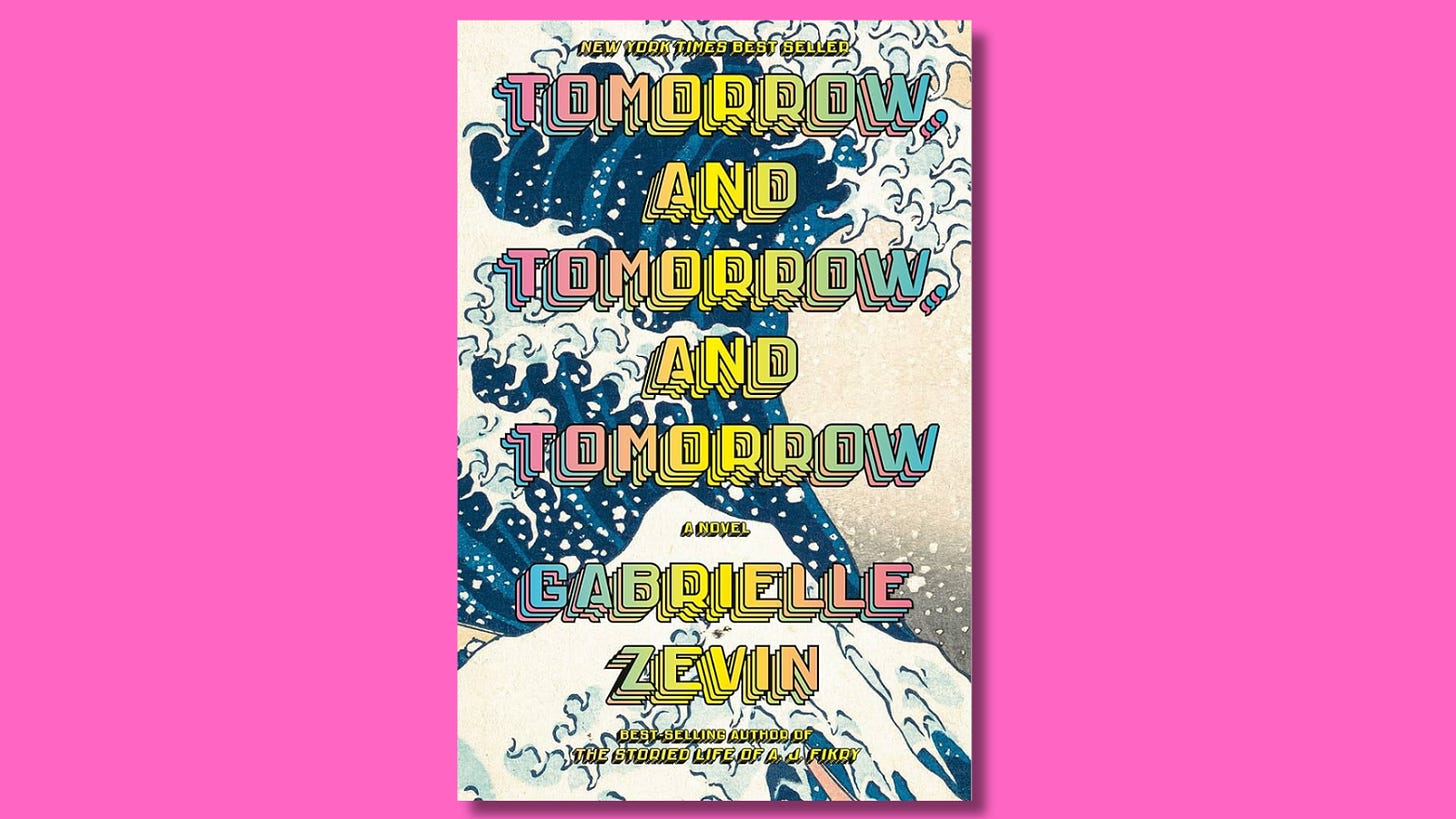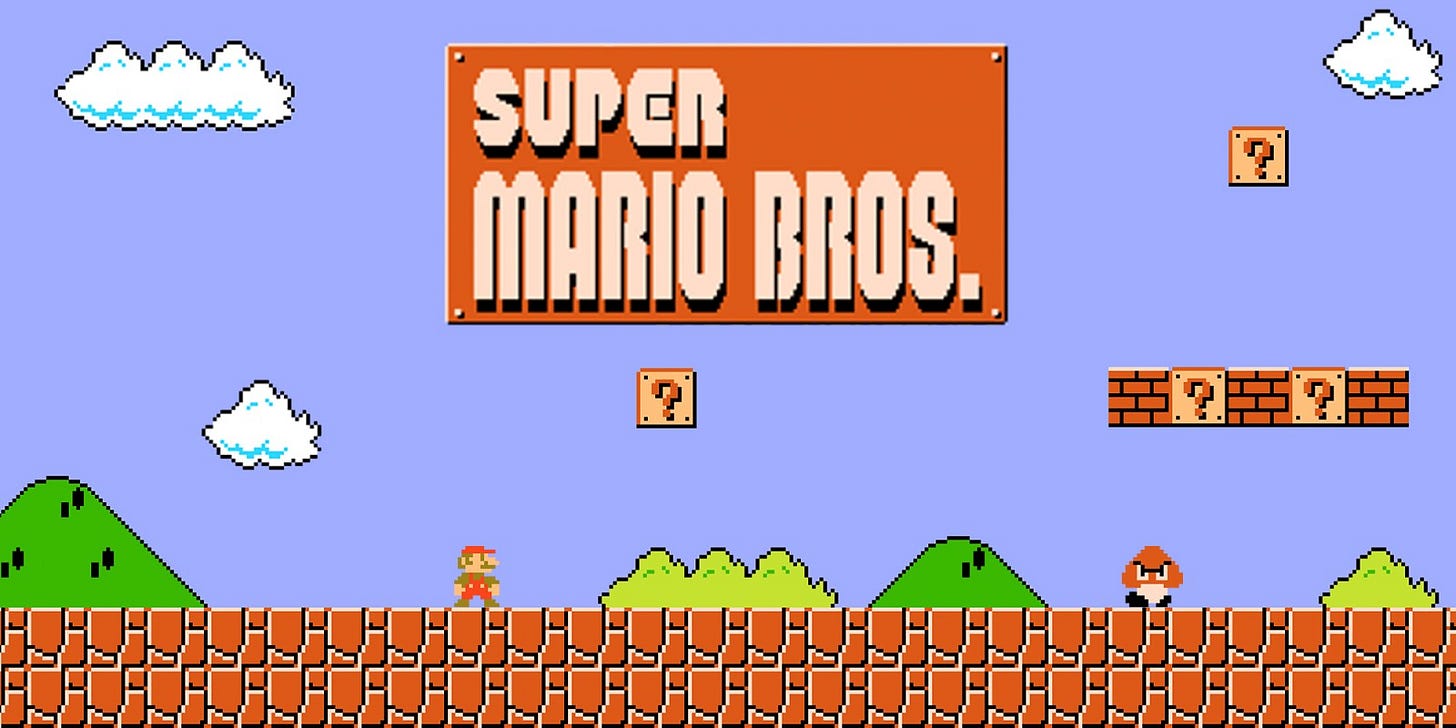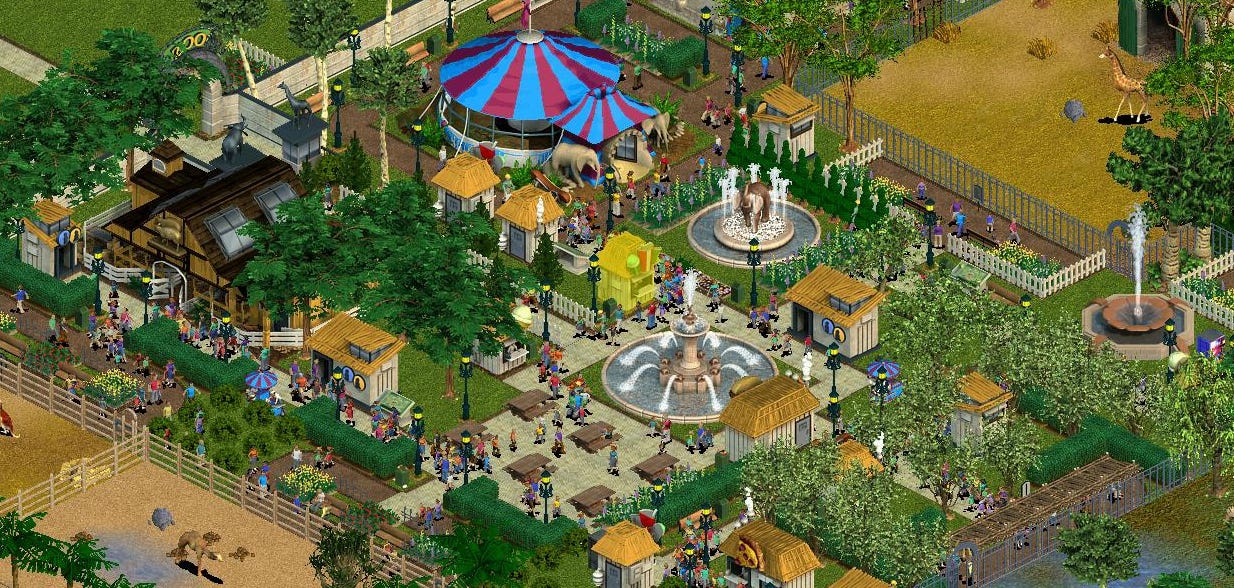Every night for the past two weeks I have gotten into bed and fallen into the engrossing world of Tomorrow and Tomorrow and Tomorrow by Gabrielle Zevin. Like countless other readers of the Sunday Times Bestseller, I have slowly but surely devoured this book, its fictional world and the many fictional worlds that reside within it.
There were many moments in these two weeks that I grew bored, frustrated even, with this book. Zevin tends to suddenly deviate, chapters appear out of nowhere with side stories that seem unimportant and distracting. If this were a children’s book, the editor’s red pen would be sweeping across entire chapters. Scribbles in the margins might say things like ‘RABBIT HOLE’ and ‘UNNECESSARY DETAIL’ and ‘WHY?! CUT!’. But in their haste to refocus the story, they would miss the genius of it.
A book about games
Tomorrow and Tomorrow and Tomorrow begins when Sam Masur and Sadie Green meet in a hospital gaming room in 1987. Sadie is visiting her sister who has cancer and Sam is recovering from a car crash that left him motherless. Just kids at the time, they immediately bond over a shared love of video games. Their shared passion leads to a life of designing games together with the help of Sam’s friend Marx and, initially Sadie’s toxic professor and boyfriend, Dov - a walking, talking embodiment of toxic masculinity so infuriating that he will make your blood boil.
The book follows their road to success, from designing their first game, Ichigo, in Marx’s apartment in Cambridge, Boston, to founding their own gaming company, Unfair Games. It explores the rewards and challenges that come with two people's lives being completely intertwined. Sadie and Sam are best friends who work together, create things together and love each other and that’s bound to get complicated.
Playing with structure
Aside from the unique concept - how many other books about video games have made it mainstream? The aforementioned brilliance of this book, at least in my opinion, lies in the story’s design and structure which mirrors that of a game.
Numerous times throughout the book, the characters recognise that unlike in real life, the beauty of a game is that when you die (or get eaten by a giant mushroom or alien or whatever happens in video games) you can restart and try again. Zevin replicates this idea in the book’s storyline by establishing a cyclical pattern within Sam and Sadie’s relationship; they create a game, then they fight, they make up and then they start all over again.
This logic can also be applied to the deviating chapters, that I mentioned earlier. If we look at these chapters through the lens of a gamer they would not look too dissimilar to a ‘side-quest’ from the main mission. It is not necessary for getting to the finish line, but essential to fully understanding and completing the game. There is one in particular ‘side-quest’ about secret highways that I found particularly engrossing.
The same can be said about the characters. Sam is the first person that we meet and throughout the book, Zevin delves more deeply into this character than any other. He is what Sadie might describe as a ‘fully 3D character’ in a game. Whereas, with Sadie herself, we don’t get any backstory other than where she grew up and the fact that her sister, Alice, used to have cancer. And then there’s Marx, the producer of Unfair Games who quite literally describes himself as an NPC* (non-playable character), coincidence? I think not.
While the predictability of Tomorrow and Tomorrow and Tomorrow runs the risk of becoming boring to the reader, as it did for me in parts, one has to applaud Zevin’s innovation and willingness to try something new. She has created a book with several fictional worlds within a story world and designed the plot and structure to mimic that of a game. Although at times the road feels long, it is unlike anything else I’ve ever read and I wouldn’t hesitate to recommend it to a friend.
*If you’re a non-gamer (like me) these are the characters in games that aren’t controlled by a player. The only computer/video game I’ve ever played properly is Zoo Tycoon, so when this term was first explained to me my natural reaction was to nod and say, ah yes, of course, the zoo visitor people!
Read along with me!
My review next month will be on Dolly Alderton’s new book, Good Material. In the meantime, the Saturday after next I’ll also be sending you something more skimmable with recommendations, book thoughts and titbits about life.
New to Nat’s Notes?
If you have somehow ended up here and this sounds like something you’d enjoy please subscribe!







